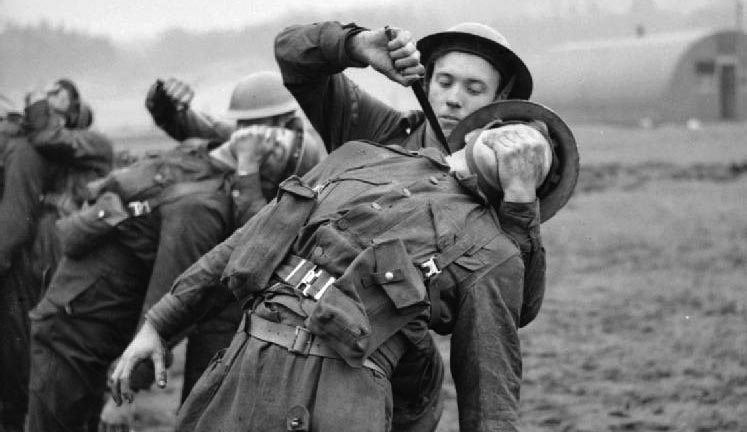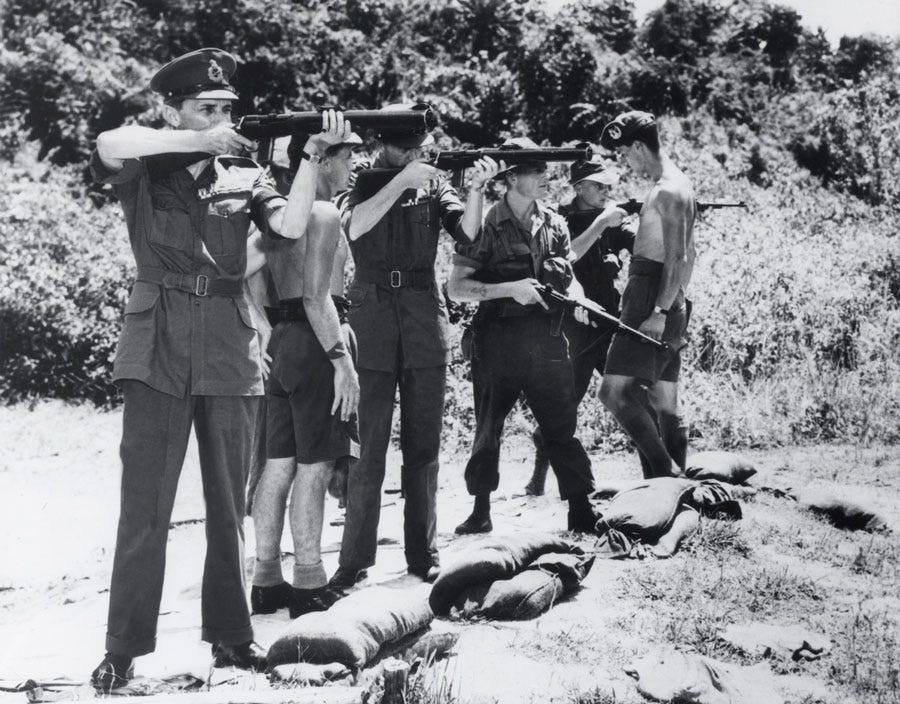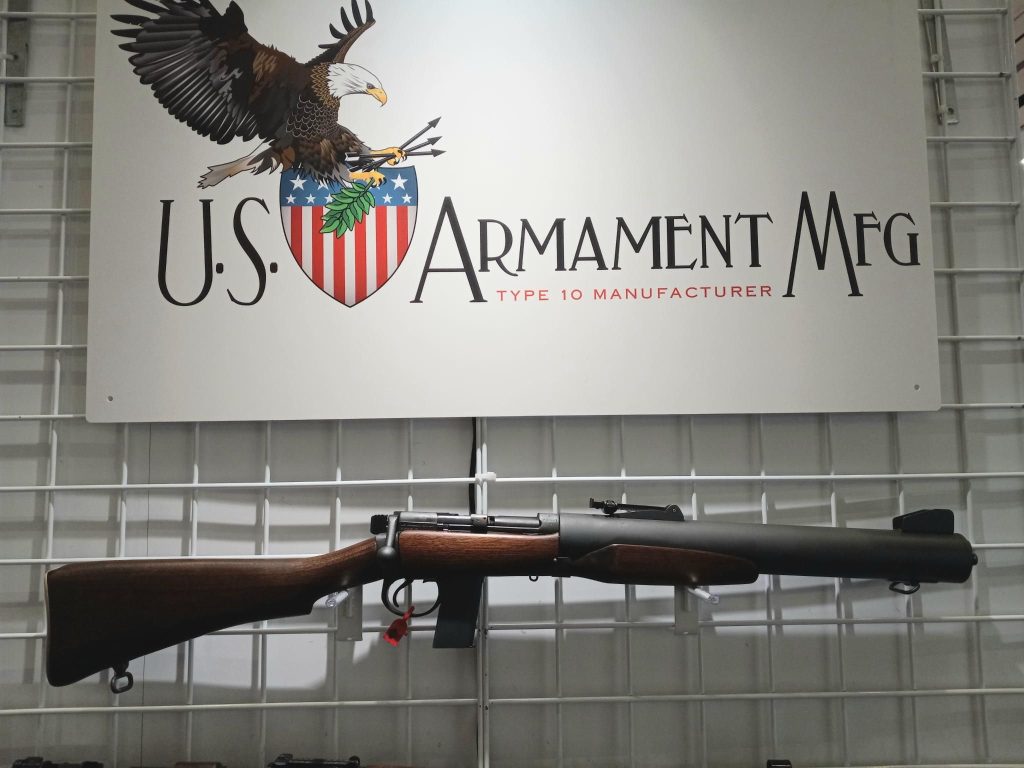Without a doubt the coolest thing I saw at the SHOT Show back in January was a 1-to-1 replica of the rare and unusual suppressed De Lisle Commando Carbine developed for the WWII British special operations forces. What the heck is a De Lisle you ask? Well, read on…
The De Lisle silenced commando carbine was a specialized British firearm, renowned for its whisper-quiet operation developed for the British Combined Operations Headquarters (COHQ). COHQ was a special department of the War Office in World War II tasked with planning and executing amphibious raids and offensive operations against German-occupied Europe, utilizing combined land, sea, and air forces. COHQ was also responsible for the development of new and innovative tactics and equipment for these groundbreaking special operations forces. One of these type of new equipment the organization was looking for was a truly silent rifle for covert missions.

William Godfray de Lisle had been experimenting with silenced .22 rifles for hunting and his work caught the attention of COHQ. As .22 had neither the power nor the range necessary for an effective combat weapon, De Lisle began the development of a suppressed Commando Carbine in 1942 based on the well-proven, and easily available, standard British forces Lee-Enfield Mk III bolt-action platform. Initially built to fire standard 9mm pistol ammunition the design was quickly changed to fire the subsonic .45 ACP round through a shortened Thompson submachine gun barrel enveloped within a large, integral suppressor (similar to the later HK MP5SD submachine gun).

The De Lisle carbine’s unique combination of manual bolt action and subsonic .45 ACP cartridge made it one of the quietest military firearms ever created. British Commandos, the Special Operations Executive (SOE), and Allied Jedburgh Teams employed it for sentry elimination and assassinating high value targets with lethal efficiency. The carbine saw use in multiple theaters, notably during the Burma Campaign against Japanese forces and for clandestine action in Europe. After WWII, remaining De Lisles continued service in British and American special forces, being fielded during the Korean War, Malayan Emergency, Vietnam War (MACV-SOG), and reportedly in SAS operations in Northern Ireland.
Only about 130–150 units were ever produced – making an original De Lisle an exceptionally rare, valuable, and iconic piece of special operations forces history.

But now you can get your hands on a 100% accurate 1-1- replica of the De Lisle from US Armament Manufacturing – a noted historical arms manufacturer. These faithful reproductions feature the .45 ACP chambering, a high quality walnut stock, integral suppressor, and a durable parkerized finish. These beauties don’t come cheap though, they retail for upwards of $6,500 USD, and require compliance with Federal and State laws regarding ownership of suppressed weapons. If this is a step too far for either your bank account or your State laws, USAM also offers a version with a fake suppressor for about $1,500 less than the suppressed version. Check out both versions here.
But, you can still get a taste for what it’s like to operate one of these beauties, and to see how it compares to modern suppressed firearms, by checking out this recent video from Garand Thumb.
And if you want to take a deep dive into the history and technical features of the De Lisle, I highly recommend this article: https://www.rifleman.org.uk/DeLisle_Silenced_Commando_Carbine.html


